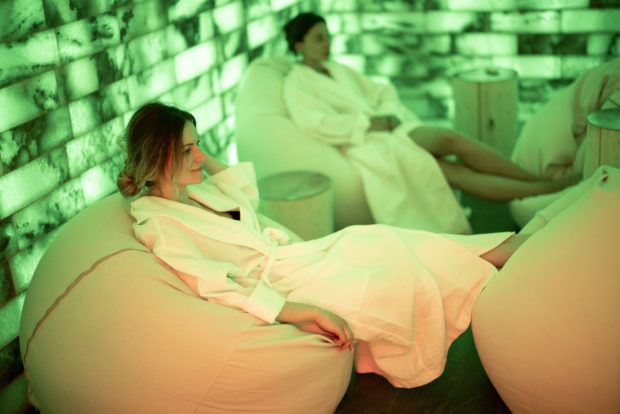New Research Illuminates Why Green Light Exposure Can Help Reduce Pain

It has long been known that different wavelengths of visible light can provide various physical benefits.
Blue light, for instance, has been found to boost alertness, aid cognitive function and memory, and elevate moods.
Similarly, red light therapy has become a useful tool for improving wound healing, reducing stretch marks and wrinkles, and improving eczema, psoriasis, and rosacea.
Recently, though, new research conducted by researchers at Fudan University in Shanghai, China, has begun to illuminate the benefits of green light therapy.
More specifically, the team followed neural activity from the eyes to the brains of mice in order to determine why exactly green light has pain-reducing benefits.
Past inquiries had already suggested that green light– primarily generated by LEDs– could help reduce the pain levels in people who suffer from migraines, arthritis, and fibromyalgia. However, the true mechanisms that made these effects possible remained elusive– until now.
The team analyzed each part of the visual processing system that is related to receiving and processing light in mice.
They first focused on the rods and cones photoreceptors located on the outer region of the retina. Then, they studied the retinal ganglion cells, which are located in the inner area of the retina.
Afterward, the researchers began disabling each individual part at different times in order to test how these variations would impact the pain experience. And through this technique, it was found that photoreceptors begin the neural pathway to pain relief.

rh2010 – stock.adobe.com – illustrative purposes only, not the actual people
So, the researchers analyzed the retinal ganglion cells next– which are responsible for receiving signals from photoreceptors.
And by using genetic silencing again, they were able to learn more about which cells were responsible for communicating with the thalamus.
Finally, the team tracked the neuro signaling while different light colors were shone into the eyes of mice. It was ultimately discovered that the green light caused more GABA signaling.
This GABA signaling sets off a domino effect by first leading to a higher expression of the Penk gene.
The Penk gene is responsible for encoding a protein known as PENK, which ultimately leads to a molecule known as ENK being created. Lastly, ENK is responsible for activating the brain’s opioid receptors– which leads to the reduction of pain.
So now, equipped with these findings, the research team now intends to set their sights on figuring out why exactly the brain has evolved to allow green light to reduce pain sensations.
To read the study’s complete findings, which have since been published in Science Translational Medicine, visit the link here.
If true crime defines your free time, this is for you: join Chip Chick’s True Crime Tribe
Sign up for Chip Chick’s newsletter and get stories like this delivered to your inbox.
More About:Science





